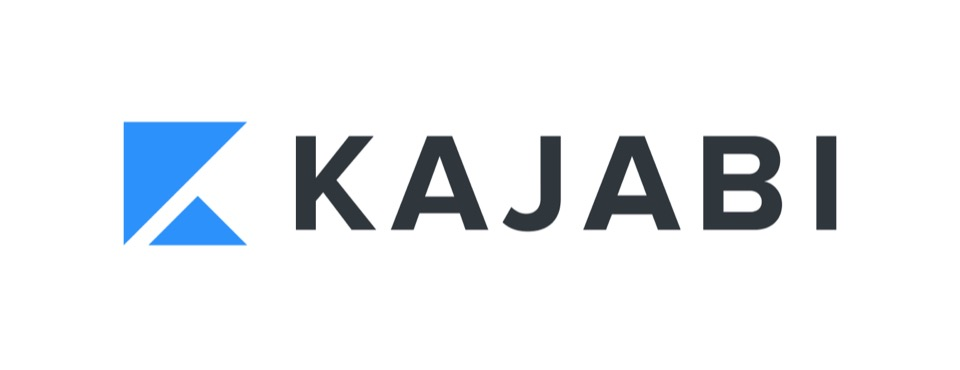16 Best Membership Site Platforms in 2024
Navigate the landscape of membership website platforms and builders with our comprehensive 2024 update. Discover the key features, benefits, and unique offerings of top platforms, as we delve into the essentials of creating a successful membership website. Whether you’re looking to monetize content, build a community, or offer exclusive access to resources, find the perfect platform to meet your needs.

Introduction
Diving into the digital world, you’ll find many places where creators can share their work and build a friendly crowd. Among them, membership website platforms are a big hit. They work like a club – you join in, and you get special stuff that non-members don’t. Picking the right membership site platform is like choosing the best spot for your treehouse. It’s not just about a place to keep your stuff; it’s about finding a spot where you and your friends can have a good time together.
A good membership platform helps make your membership site a place people love to visit. This article is your buddy in helping you navigate through the choices of membership platforms, aiming to set you on the right path to a successful membership site.
Understanding Membership Sites

What is a Membership Website?
A membership website operates as a gated section within a broader online domain, offering exclusive access to content and resources for registered members. They serve as valuable assets for nonprofits, clubs, associations, and businesses, aiming to provide additional value through members-only content. These memberships can be free, paid, or tiered, offering varying levels of access and benefits.
Subscription Sites vs Membership Sites
While both models aim at fostering a loyal customer base, they operate on different premises. A subscription website, like Netflix, requires users to pay a fee to access its content and services. On the other hand, membership websites, though they may also have paid tiers, often allow users to sign up for free, unlocking certain benefits like newsletters and rewards.
Exploring the Membership Model
A membership model is akin to joining a club where members pay a recurring fee to access exclusive perks. This model is prevalent in education, health, wellness, and lifestyle markets, where continuous support, guidance, and resources are sought after. For instance, a business coach might offer access to coaching sessions, mastermind groups, and exclusive content through a membership model, fostering a community of members aiming to grow their businesses.
Some benefits of a membership model include:
- Recurring revenue stream
- Creation of exclusivity and community around the brand
- Increased engagement, loyalty, and brand advocacy
Kinds of Membership Site Models
- Content-based: Provides exclusive content such as articles, videos, or podcasts for a recurring fee.
- Product-based: Offers products like courses, ebooks, or software for a recurring fee.
- Community-based: Centered around a private community like a forum or a group for a recurring fee.
- Service-based: Offers services such as coaching or consulting for a recurring fee.
- Hybrid: A combination of different types of content, products, services, and community support for a recurring fee.
Subscription Business Model
In a subscription business model, customers pay a recurring fee, monthly or annually, to access a product or service. This model is widely adopted across various industries, from IT companies like Adobe and Microsoft offering software subscriptions, to entertainment giants like Netflix and Spotify providing unlimited access to movies, music, and TV shows. The subscription model extends to media, communication, and food production & delivery sectors, offering a steady, predictable revenue stream for businesses while providing continuous value to the customers.
By offering personalized experiences, exclusive benefits, and a sense of community, both membership and subscription models allow businesses to foster a loyal customer base, ensure a steady revenue stream, and stand out in competitive marketplaces.
Types of Membership Websites

Understanding the different types of membership sites is crucial in choosing the right membership site platform for your content. Let’s delve into six common models.
The Continual Content Model
The Continual Content Model is a hallmark of several successful membership site platforms. This model operates on a recurring content delivery basis, where members are provided with new content as it’s created. It’s an excellent model for those offering online courses, tutorials, or a series of content that unfolds over time. It’s about keeping the membership engaging and fresh with new materials, ensuring that members have something to look forward to. The longer the members stay, the more content they access. It’s a model that encourages long-term membership subscriptions and can be tailored to sell memberships at different tiers, each with its own level of access to the new content.
The All-In-One Type
The All-In-One Type is straightforward and is often associated with membership site platforms that host a plethora of content. Upon subscribing, members gain unlimited access to all the content available on the membership site. This model is particularly enticing for those with a vast array of online courses or a large library of resources. It’s about providing a treasure trove of content for a fixed subscription fee. Members appreciate the freedom to explore and learn at their own pace, making this model a favorite for educational and resource-intensive membership sites.
The Freemium Model
The Freemium Model is a strategic model adopted by membership platforms aiming to attract a broad audience. By offering a free trial or limited access to content, potential members can get a taste of the premium content and community features the platform offers. The goal is to entice them to upgrade to a paid membership to enjoy more benefits. This model is excellent for platforms with diverse content, allowing for a clear distinction between free and premium offerings. It’s a structured way to sell memberships by showcasing the value proposition of the membership site.
The Coaching Membership
The Coaching Membership model is a personalized approach, often seen in platforms offering online courses, consulting, or coaching services. Each member receives individualized attention, guidance, and coaching, enhancing the engagement and value derived from the membership. This model is excellent for membership platforms that prioritize personal development, skill acquisition, and one-on-one interactions. The personalized nature of this model fosters a deeper connection between the members and the coaches or experts, contributing to a thriving membership community.
The Fixed Term
The Fixed Term model operates on a defined membership duration. It’s an ideal model for seasonal content, specific online courses, or programs with a start and end date. Members pay for the duration of the term, and at the end, they can decide whether to renew or not. This model provides a clear structure, making it easier for members to understand what they are signing up for. It’s a transparent model that aligns well with course-based content delivery, making it a favorite among educational membership sites.
The Online Community
The Online Community model emphasizes community engagement among members. This model facilitates interaction, discussion, and collaborative learning. Community features like forums, discussion groups, and interactive content play a pivotal role in enhancing engagement. It’s not just about the content; it’s about building a membership community where members can interact, share insights, and learn from each other. It’s a model that adds a social dimension to the membership site, making it more engaging and vibrant. The sense of community fosters loyalty and encourages members to stay and contribute to the communal learning experience.
Choosing the Right Model
Each model comes with its own set of advantages, tailored to meet different content strategies and member engagement levels. Whether it’s about selling online courses, fostering a membership community, or providing a space for personalized coaching, the right model aligned with a robust membership site platform will pave the way for a successful membership website.
Benefits of Running a Membership Site

Reliable Stream of Income
Running a membership site can provide a reliable stream of income as members pay a recurring fee (monthly or yearly) for access to gated content. This model is scalable, whether you have a handful or thousands of members, making membership site platforms a lucrative choice for generating a steady income1.
A Strong Community
Membership sites foster a strong community of like-minded individuals. Members, driven by a shared interest in a particular niche, can interact, share insights, and engage in discussions, further enriching the membership experience and promoting a vibrant membership community.
Audience for Marketing and Upselling
Having a dedicated audience makes it easier to market and upsell other offerings. Members, already interested in the niche, are likely candidates for targeted marketing campaigns, providing an opportunity to sell memberships to additional programs or offer upgraded membership levels.
Opportunity to Refine Content
The feedback and engagement from members can be invaluable in refining content, ensuring it meets the members’ needs and expectations. This iterative process helps in maintaining a high-quality membership site, driving both member retention and the acquisition of new members.
Credibility and Industry Authority
Launching a membership site showcases your expertise in a particular field, helping establish credibility and industry authority. Continuous provision of valuable content reinforces this authority, making your membership platform a trusted source in the industry.
Exponential Growth Potential
Membership sites have the potential for exponential growth without significantly altering core operations. As the membership base grows, the value of the site increases, attracting more members, and creating a virtuous cycle of growth that benefits both the members and the site owner.
Important Features of Membership Website Platforms

Marketing and Management
Having a membership site demands a seamless blend of marketing and management functionalities. A worthy membership platform should encompass tools for email management, sales funnel orchestration, and the integration of affiliate programs. Choosing a platform that lacks these key features could lead you to third-party services, which might not always be compatible with your chosen builder.
Payment Organization
The essence of a membership site is to monetize content; hence, a reliable payment processing system is crucial. Ensure your platform supports diverse payment gateways like PayPal, Stripe, and ApplePay, with a favorable transaction fee structure. Additionally, the capability for handling donations or selling additional products can be a plus.
Community Engagement
A thriving community feature in a membership platform enhances user engagement, creating a space for members to interact, share, and learn from one another. Some platforms provide extensive community features, including forums and social networks, while others may offer basic discussion groups.
Analytics Collection
Understanding your site’s dynamics through analytics like traffic metrics, new memberships, and churn rates is vital for growth. A good membership platform will provide access to such data, aiding in informed decision-making.
Making an Informed Choice
The comparison of popular platforms in the subsequent sections aims to provide a clearer picture of what each platform offers concerning these essential features. Making an informed choice based on these features will significantly impact the success and manageability of your membership site.
Top 10 Best Membership Website Platforms 2023
In this section, we delve into an exploration of some of the top membership site platforms. A brief introduction, key features, pros, and cons of each platform are discussed to provide a clearer understanding of what each platform offers.
1. Mighty Networks

Mighty Networks is a versatile, all-encompassing platform that amalgamates content, courses, community, and commerce under one roof. It is tailored to provide a holistic environment for engagement and learning.
Key Features:
- Mighty Co-Host™: A unique AI community engine to enhance creativity and human connections.
- Flexible Spaces: Incorporating forums, live and pre-recorded courses, live events, messaging, and more.
- Customizable landing pages: Tailor the look to reflect your brand identity.
- Versatile applications: Available on both web and native mobile apps for iOS and Android.
Pros:
- Seamless integration of website and memberships under your brand.
- Ability to sell memberships, events, courses, private groups, or bundle them together.
- Creativity boosting tools and constant innovation with new features.
- Charge in 135 different currencies or even with token-gating.
Cons:
- Mighty Networks might require a learning curve for newcomers to navigate through the multiple features.
2. Kajabi

Kajabi shines as a membership site platform emphasizing pre-recorded online courses and aggressive marketing tools to help creators sell and deliver their content efficiently.
Key Features:
- Comprehensive Marketing Engine: Incorporates emails, campaigns, landing pages, and up- and down-sells.
- Kajabi Community 2.0: An enhanced community feature with live meetups and a forum, though lacking the flexibility of a Mighty Network.
- Solid Learning Management System (LMS) for asynchronous content delivery.
Pros:
- Powerful marketing tools integrated within the platform.
- Good mobile apps availability for every device.
- AI features for course creation and ability to charge in different currencies.
Cons:
- Higher price point compared to other platforms.
- Limited community functions with a need for separate logins for community and course sections.
- Lacks native branded apps, migration may be needed if you outgrow Kajabi.
3. Wild Apricot

Wild Apricot is tailored for membership-based non-profits, providing cloud-based technology to manage memberships, integrated emails, and payments, along with event management.
Key Features:
- Drag and Drop Website Builder: Easy creation and management of websites.
- Integrated Email and Payments: Manage payments and communicate with members seamlessly.
- Advanced Database Search: Targeted email campaigns and analytics tracking for email campaigns.
Pros:
- Excellent membership management and database features for non-profits and associations.
- Integration with pre-existing systems at your company for a smoother transition.
- Live event management features to handle virtual events.
Cons:
- Dated design with a clunky user experience.
- Lacks dedicated community spaces, online courses, livestreaming, and AI options.
- Absence of features promoting community interaction and collaboration.
4. Teachable

Teachable is a membership site platform highly revered for its focus on pre-recorded online courses. It’s a haven for creators who wish to distribute multimedia-based content seamlessly.
Key Features:
- Multimedia Lectures: Create a rich learning environment with video lessons, multimedia lectures, and online coaching sessions.
- Robust Integration: A plethora of third-party integrations, accepting a wide range of currencies.
Pros:
- Efficient asynchronous Learning Management System (LMS).
- Extensive marketing options including landing pages, coupons, and affiliate programs.
- Flexible monetization and integration options.
Cons:
- Lacks community functions like discussion forums, live events, and live streaming.
- No Android app, limiting accessibility for a significant user base.
5. Memberful

Memberful shines as a WordPress-based membership plugin, making it a go-to for those with existing websites who wish to transition into the membership site realm gradually.
Key Features:
- Seamless Integration: Perfectly integrates with WordPress, allowing for selling courses, basic community features, and both digital and physical products.
- Monetization Features: Offers a variety of monetization options, including special promotions, discounts, and coupons.
Pros:
- Easy integration with pre-existing WordPress websites.
- A range of monetization features to boost sales and engagement.
Cons:
- Limited community function that could hinder engagement.
- The plugin nature could complicate the website and alter its feel.
6. Patreon

Patreon stands out as a platform dedicated to building a community of supporting fans, providing creators an avenue to receive support from their audience.
Key Features:
- Patronage Monetary Model: A unique model allowing creators to easily offer memberships to their fans.
Pros:
- A good platform for creators to garner support from their audience.
- Simplified membership selling process.
Cons:
- Limited features for building a robust membership business.
- Expensive transaction fees that grow with your revenue, which could be a drawback for thriving membership businesses.
7. Podia

Podia emerges as a user-friendly membership site platform, offering a sanctuary for creators to sell online courses, digital downloads, and memberships.
Key Features:
- Drag and Drop Website Builder: Simplifies the process of setting up your online domain.
- Integrated Email and Discussion Forum: Encourages interaction and engagement among members.
Pros:
- Simple platform to sell online courses, digital downloads, and memberships.
- Provides basic community functions and webinar features, fostering a sense of community.
Cons:
- Absence of a mobile app may limit access and engagement.
- Community features are quite limited compared to other membership site platforms.
8. Bettermode (Formerly Tribe)

Bettermode serves as a white-label customer community builder, allowing companies to establish forums for discussion, questions, and content sharing.
Key Features:
- Community Forum with Custom Spaces: Facilitates discussions and engagement.
- Integrates with a Corporate Website: Eases the integration process, making it a seamless addition to existing platforms.
Pros:
- Ideal for companies wanting a customer service forum.
- Offers analytics, moderation tools, and search to optimize community management.
Cons:
- No payment handling features, limiting its use for paid memberships.
- The absence of mobile apps may hinder accessibility and engagement.
9. Substack

Substack stands out by catering to the needs of writers and journalists, offering a platform for monetizing newsletters.
Features:
- Newsletter Monetization: Enables creators to build an audience and monetize their newsletters.
- Subscription Model: Encourages recurring payments, generating a steady income stream.
Pros:
- Ideal platform for writers looking to monetize their newsletters.
- Supports different currencies, facilitating international transactions.
Cons:
- Takes a 10% cut on all payments, which could be a significant amount as earnings increase.
- Limited community features beyond a newsletter, restricting engagement opportunities.
10. AccessAlly

AccessAlly shines as a WordPress plugin, catering to those wanting to offer memberships and digital products on WordPress while leveraging online learning features.
Features:
- All-in-One WordPress Plugin: Combines memberships, digital products, and a Learning Management System (LMS).
- Course Features: Offers quizzes and bookmarks to enhance the learning experience.
Pros:
- Comprehensive WordPress plugin that integrates well for online course delivery.
- Offers good course features like quizzes and bookmarks to enhance engagement.
Cons:
- High price point which may deter some users.
- Community features are limited, which could hinder member interaction and engagement.
These platforms offer a diverse range of features catering to different needs, whether it’s monetizing newsletters, establishing community forums, or selling online courses. Selecting the best membership site platform depends on your specific requirements, budget, and the level of community engagement you desire.
5 Best Membership Website Builders
Creating a comprehensive membership website involves a blend of content management, engagement, and subscription handling, amongst other factors. Membership site builders and plugins are tailored to simplify this process, allowing individuals or organizations to create and manage a membership site on an existing website or a dedicated platform. Here’s a dive into the top 5 builders and plugins that stand out in this domain:
Wix

Wix is notable for its member security and control features. It offers a dedicated membership website builder, allowing for the creation of members-only pages and exclusive access areas. Wix’s drag and drop editor makes it user-friendly, and its custom domain feature adds a professional touch to your site. It offers different membership tiers and a free plan to get started.
- Pros: Easy to use, Good member management, Custom domain.
- Cons: May require third-party apps for advanced membership features.
Squarespace

Squarespace is a website builder tailored for creating premium member content. It offers a blend of elegant design and functional features like email marketing, which is essential for maintaining engagement with members. Squarespace provides unlimited courses creation under its membership program and offers a free trial to explore its features.
- Pros: Premium design, Email marketing tools.
- Cons: Limited third-party app marketplace.
Shopify

Shopify excels in e-commerce and provides a platform for adding a membership section to an online store. It supports recurring payments, making it convenient for both the site owner and the members. Shopify also allows for the integration of different marketing features to enhance the membership experience.
- Pros: Strong e-commerce features, Recurring payments.
- Cons: May require additional plugins for comprehensive membership management.
GoDaddy

GoDaddy is known for its speed in setting up a membership website. It offers a membership management platform that includes basic membership site features and is ideal for those looking to set up quickly. GoDaddy provides a free trial to test the waters before committing.
- Pros: Quick setup, Free trial available.
- Cons: Lacks some advanced membership features.
WordPress.com

WordPress is a versatile platform with a plethora of membership plugins like Memberful, which integrates seamlessly, allowing you to sell courses, digital products, and manage your membership program. WordPress supports custom domains, monthly or yearly subscriptions, and offers a vast range of membership site software options through its plugin ecosystem.
- Pros: Highly customizable, Extensive plugin options.
- Cons: May require a learning curve for beginners.
In conclusion, the choice of a membership site platform or plugin largely depends on the individual needs of the site owner. Whether it’s the ease of setup, the level of customization, or the range of features offered, these platforms provide a variety of options to create a thriving membership site.
Deep Dive into Scrile Connect – Best Membership Site Platform

Scrile Connect is a product of Scrile’s extensive experience, with over 1000 launched projects under its belt. It is a comprehensive turnkey SaaS solution tailored for rapid deployment of content monetization websites or social platforms akin to Patreon, OnlyFans, and Ko-fi. The platform encompasses an array of built-in tools facilitating direct monetization avenues for content creators through subscriptions/memberships, feed with paid posts, paid messaging, pay-per-minute calls, and live streams. Additionally, it houses an intuitive admin dashboard and a built-in billing system, forming a robust foundation for entrepreneurs eyeing to tap into the digital content monetization realm.
How it Stands Out from Other Platforms

Unlike many platforms like Mighty Networks that charge a hefty monthly fee, Scrile Connect’s model is structured to grow with your community, making it a cost-effective choice from the outset. It’s a unique blend of advanced features with minimal transaction fees sets it apart.
Creating a Membership Website with Scrile Connect

The platform’s free trial offering ensures a risk-free exploration, allowing a glimpse into its vast customization opportunities. As your community burgeons, Scrile Connect scales alongside, offering the necessary tools to manage unlimited members, sell courses, and handle payment processing efficiently. The built-in best membership site software aids in tracking membership subscriptions, ensuring you stay atop of your community’s growth and engagement levels. The members-only area fosters a sense of community and engagement, a vital aspect in today’s digital interaction realm.
Customization Opportunities
Scrile Connect stands out in its customization latitude. The drag-and-drop editor simplifies the creation of a visually appealing and functional membership site, even for those with no coding knowledge. You can tailor the look, feel, and functionality of your membership site, aligning it with your brand’s identity. The platform supports the creation of custom membership pages, members-only content, and even paid access areas, providing a personalized experience for your members. Moreover, the ability to create online courses, set up an affiliate program, and utilize marketing features, amplifies the platform’s appeal to a broad spectrum of content creators and entrepreneurs.
In conclusion, Scrile Connect emerges as a formidable and user-friendly platform for anyone looking to create a membership website. Its array of features, coupled with its scalability and customization opportunities, places it in a favorable position among the best membership site platforms available.
Considerations When Choosing a Platform

When venturing into the creation of a membership website, selecting the right membership site platform is pivotal. Here are some considerations:
- Evaluating Needs: Assess the primary goals of your membership site. Whether it’s community-building, selling online courses, or providing exclusive content, your goals will guide your platform choice.
- Comparing Features: Different platforms offer varied features. Look for essential features like payment processing, membership tiers, and customization options. Comparing the best membership site platforms can provide insight into what each offers.
- Assessing Support and Community: A strong support system and an active community can be invaluable, especially for troubleshooting and gaining new ideas.
Membership Site Platform: Future Trends

The landscape of membership websites is ever-evolving with new technologies:
- Advanced Customization: As members seek unique experiences, platforms that offer advanced customization will be in demand.
- Integrated Marketing Tools: Incorporating email marketing, SEO, and other marketing tools within the platform will become standard.
- Enhanced Community Features: Features that foster community engagement and interaction will be more prevalent.
Conclusion
Building your own membership site is an exciting venture. The platform you choose will significantly impact your site’s success. Take time to evaluate your needs, compare the best membership site platforms, and consider the level of support and community surrounding each platform.
With the right platform, you’re well on your way to creating a thriving membership website that meets your goals and provides value to your members. Explore, compare, and choose a platform that aligns with your vision, and embarks on this rewarding journey.
Frequently Asked Questions
How Much Does a Membership Website Cost?
The cost of a membership website can vary significantly based on the platform you choose, the features you need, and the level of customization you desire. Some platforms like Mighty Networks offer a free trial to get started while others might charge a monthly or annual fee. Additionally, custom development will incur higher costs.
How do I create an online membership site?
Creating an online membership site involves several steps:
- Choose a membership website software like Scrile Connect or a platform such as Mighty Networks.
- Customize the site to match your brand.
- Set up membership tiers and pricing.
- Add content and resources for members.
- Promote your site to attract members.
What makes a good membership website?
A good membership website offers:
- Easy navigation and user-friendly interface.
- Valuable and exclusive content.
- A sense of community and engagement.
- Effective marketing tools to promote the site.
- Reliable support and resources for members.
Do membership sites make money?
Yes, membership sites can generate revenue through monthly or annual subscriptions, selling courses, offering premium content, or through affiliate programs. The best membership models provide value that encourages members to maintain their subscriptions, thereby creating a steady stream of income.
Read also
Top 10 Best Online Community Platforms
Discover the top 10 best online community platforms, including their features, benefits, and pricing to help you build and manage a thriving community.
Innovative Membership Website Ideas
Get inspired by innovative membership website ideas that can help you create a unique and engaging platform for your audience.
How to Make a Social Media App: A Step-by-Step Guide
Learn how to make a social media app with this step-by-step guide, covering everything from planning and design to development and launch.
Subscription Platforms for Creators: Top Choices
Discover the top subscription platforms for creators, including features, pricing, and tips on choosing the best platform for your content.
5 Best Mighty Networks Alternatives
Explore the 5 best alternatives to Mighty Networks, comparing their features, pricing, and benefits to help you find the perfect community platform.